I first encountered writer and storyteller Sharon Blackie at the Uncivilisation festival back in 2011. She was telling about her experience of moving to the Hebrides, becoming a crofter and connecting with her new home. I’ve since found a trove of inspiration in her blog Re-enchanting the Earth where she writes about myth, story and the natural world. She is editor of the excellent print and online magazine Earthlines and runs Two Ravens Press, an independent publisher of books about nature and place, with David Knowles from their croft on Lewis.
As I read Sharon’s thoughts on myth and place and my research on narrative progressed, questions around her writings started to take shape. Despite a broken wrist and end-of-year busyness, Sharon kindly engaged in a dialogue about these and agreed to share her response here.
JDG: On your blog Re-enchanting the Earth, you write about the relation between myth, narrative and sense of place beginning from the insight that it is in stories we come to make sense of the world. My research on the Dark Mountain Project takes as a similar starting point, so it is really interesting for me to follow your writing about this. You are also editor of the magazine Earthlines, which is explicitly about building a culture of nature and explores ways of being in the world that acknowledges that culture isn’t separate from nature. What do you see as the foundational myths or narrative behind the metaphor of ‘culture as nature’ and where do you look for stories about culture as nature?
SB: The concept of the culture of nature, to me, is about seeing ourselves as just one part of the planetary whole, and the rest of the natural world, while at the same time recognising what is unique about humanity: about our own species’ culture, or what Robert Bringhurst called ‘the thin but sometimes lovely web of answers we keep spinning for ourselves’. It means celebrating both our connectedness (or ‘kindredness’, as Richard Mabey once described it) AND, equally importantly, our otherness. Stories of course are a crucial part of that culture, and they’re an aspect of the culture that, if used correctly, can bring us back to an understanding of nature and our part in it. Stories are like a bridge between those two worlds that two thousand years of Western philosophy has insisted on separating. Stories can help us reconnect.
There are many, many myths and stories that portray the unity of culture and nature. Many people will automatically gravitate to indigenous mythologies, and it’s easy to see why: they still use their stories in meaningful ways. ‘I will tell you something about stories,’ the Laguna storyteller Leslie Silko says, ‘They aren’t just entertainment/ Don’t be fooled/ They are all we have, you see/ All we have to fight off/ Illness and death. You don’t have anything/ If you don’t have the stories.’ For Native Americans like Silko, a story is an intricate part of a web that cradles all the past, present and future events, ceremonies, beliefs and traditions of their culture. In the centre of this web is the land. Each story is part of another story which is linked to yet another one, and all these stories are connected back to the very origin of creation. That’s very powerful stuff!
The problem with indigenous mythologies from elsewhere is that those that are often most loved – Native American mythologies, Australian Aboriginal mythologies, for example – don’t relate to our European culture. And if you want stories to have traction – by which I mean if you want them to really dig deep inside a person (or a group) and be able to create change – they need to be built on images and symbols that are relevant to a culture, and that bring a sense of cultural continuity. And many of our old Western fairytales and mythologies do indeed demonstrate that unity and continuity.
I think part of the problem is that we don’t always see our own stories in the same way as we see stories from other places. People are used to hearing our own fairy stories, myths and legends presented simply as stories, as entertainment for kids; we don’t use them any more in the way that indigenous cultures use stories, for teaching and for healing. And so people tend not to think of them in the same way as they would stories about Grandmother Spider or Coyote. But picking up on Coyote: if you take Irish fairytales just as one example, the leprechaun is a classic Trickster character! – and yet he has been so diminished as a cultural icon by so much shallow Disneyesque characterisation and jokey emerald ‘bling’ that we forget where that character came from, and what he had to teach. There are many similar examples: the unity of human and animal worlds in myths and stories that have shapeshifting as a motif, for example. My ever-favourite Scottish selkie tale springs to mind: the loss of one’s skin representing the loss of a connected self, for example. The folk and fairytale culture of most European countries – certainly the Celtic fringes – show ‘fairies’ as nature spirits, representing the natural world, and give us stories about the ways in which humans approach it, interact with it that recognises a much more deeply interwoven relationship than we have today. The ‘grail’ legends are absolutely perfect metaphors for connection and disconnection with the natural world.
So you don’t have to look very far. The problem is that we have forgotten how to approach such stories: both with reverence, and with understanding of their various meanings. The good thing is that there are people out there who’ve made a lifetime’s study of those stories and their symbols and images – all kinds of people, from academics and storytellers like Marina Warner and Sean Kane, to psychologists like Clarissa Pinkola-Estes and Bruno Bettelheim – who can teach us and remind us of what we stand to lose if we let these stories degrade any further.
JDG: One of the points you make in your writing is that ‘stories work from the bottom up’. That we arrive at a larger, coherent meta-narrative through our ‘smaller’ stories. A meta-narrative isn’t simply something we can make up, or decide on, that then will make sense of everything for us. Working with stories, and narratives, as a process of change requires more than simply choosing a story of the world that we like. What do you see as the dangers of what you call magical thinking around narrative, the idea that all we need to do is to invent a new or better story and then our problems will be overcome?
SB: What I fear is very simple: a shorting out of the batteries. I fear that people – for a bunch of very good reasons, and armed with both enthusiasm and talent – will waste their time and energy trying to create something which can’t be created. That they’ll go running off down paths that ultimately don’t lead anywhere, and we don’t have enough talented people who understand the problem that we can afford to lose a bunch down some dark alley. I also fear above all a killing of the magic. Because that’s what this process is, of changing the story that a person or a group or an entire civilisation tells about itself. A curious mixture of magic and alchemy is required to create a story, with all its depths of symbols and its imagery, that buries its way into a person’s heart, and then the heart of a community, and then the heart of a whole culture. And magic and alchemy have to be learned. And given time to work. You can’t short-circuit the process. We’re too quick these days to want to fix things. But some things can’t be rushed. They have to grow. Slowly. And deeply.
I remember when I first wrote about this issue of how meta-narratives are created on my ‘Re-enchanting the Earth’ website. I had an outraged email from someone who said to me ‘You can’t say that it doesn’t work like that. Who has the right to tell other people how stories should be understood?’ And I found that curious, because of course there are people who spend their lives researching stories, and how myths and meta-narratives develop, and working with them in various ways, just as I have worked with and studied them in the context of literature and of psychology – and it’s a great pity that that is all too poorly understood, that there is sometimes resistance to it, because there is treasure to be found in that work. There’s a tendency to dismiss academic work on stories and narratives as dry, scientific, missing the point – but that’s far from the truth. Wonderful people – poets, storytellers themselves – like Robert Bringhurst and Sean Kane are writing about how cultural narratives are formed. Kane in particular has written about this process:
“A new story [may be] released into the social repertoire … But the release cannot be sudden … The story has to be told and retold until it passes the test of narrative art, and then the further test of the society’s repertoire of acceptable mythological experience. The story has to conform to the patterns of narrative pleasure and the patterns of being in a society. Only then is the society ready to move mythically in the direction indicated by the story. Even then, the society shifts its overall mythological memory subtly, not in a way that disrupts its hierarchy of narrative experience.”
Often, the fact that there is even such a thing as ‘narrative art’ is ignored; often it’s assumed that creating a culture’s ‘myths to live by’ is really no different from sitting down at a desk and writing a short story. As a culture we have a tendency to want the quick fix. We want to believe that we can change the world, and change it right now! But we don’t always want to put the work in, the long and necessary and very disciplined work, to do it in a way that will stick. That’s the danger, to me. I worry that people, all excited by the transformative power of storytelling, won’t take the time to understand how those superbly transformative stories develop. The kinds of stories we’re talking about are filled with archetypal images and tropes that have been growing for hundreds and sometimes thousands of years. The idea that you can sit down in a workshop one day and write a new story that has that kind of transformative power just doesn’t make any sense to me. Which doesn’t at all mean that people should stop trying, or stop writing stories! Stories are life. But we need to approach the process with reverence. As an apprenticeship. Stories are magical. They have to be seduced, cajoled. Stories are the basic constituents of the world – at least, of the way we perceive the world and our place in it. They deserve to be treated with respect.
And at the other end of the scale of argument … to me, it’s really not disputable that stories come first and meta-narratives come later, because it’s very embodied precisely in the definition of meta-narrative – it’s what the word means (the bold type is mine for emphasis): “A meta-narrative … is an abstract idea that is thought to be a comprehensive explanation of historical experience or knowledge … It is a global or totalizing cultural narrative schema which orders and explains knowledge and experience”. The prefix meta- means “beyond” and is here used to mean “about”, and narrative is a story constructed in a sequential fashion. Therefore, a meta-narrative is a story about a story, encompassing and explaining other “little stories” within conceptual models that make the stories into a whole. In postmodern philosophy, a meta-narrative is an untold story that unifies and totalizes the world, and justifies a culture’s power structures. Examples of these stories are nationalisms, religion, and science, to name a few. Meta-narratives are not usually told outright, but are reinforced by other more specific narratives told within the culture.’
JDG: As an alternative to ‘top down’ meta-narratives, you talk about letting a multiplicity of narratives grow into a coherent whole. I would like to quote you one this, because I find this vision very compelling. You talk of this as:
“A web of myths and stories that, by being so deeply interrelated, will lead automatically and organically to that new metanarrative that everyone wants so badly, but that can never possibly derive from the top down, like some new unelected political regime”
I wonder if you could say more about how you see this process of how smaller stories grow into a larger, coherent narrative?
SB: I’m not sure it can be very simply defined. But to me it’s predominantly about inspiration, and a process of accumulation. If we take as an example the current meta-narrative that most people in Western countries subscribe to: it began with people exploring ideas which seemed to them to offer a superior vision of the world and of human nature compared to the story that had been told before. Plato is just one example of those who pitched different stories, one of human superiority to ‘nature’, of the superiority of the spiritual world rather than the physical earthly world … and you can trace historically the detailed structure of Greek mythology and the role of the Greek gods and goddesses, and see it change as Greek thinking began to change. Then, putting it very simplistically, other stories combined with the Greek philosophers’ stories, and that whole dualistic narrative grew over time, became entrenched in people’s thinking, informed their language, their assumptions … And what happened is that these stories informed and were informed by events and processes in the world, so for example the stories of superiority and growth and wealth were reinforced by developments in medicine and civic infrastructure and so on … there’s a feedback loop. And that narrative turned so easily then to a narrative of human domination over nature, a story of progress, of rationality and technology, of growth, growth, growth … That meta-narrative took time to develop, and along the way it changed and grew, and new stories were told that fed into it and embedded it so deeply in the ways in which people were educated that it came to seem so obviously ‘true’ that it couldn’t be challenged.
But it was challenged. It was challenged all the way in one form or another. It was challenged by various groups, like the Romantics after the Enlightenment, by other writers and poets, by scientists. By people who didn’t want to live like that. And over time, as the flaws in that meta-narrative began to become more and more apparent and dissonant with events in the ‘real world’ – let’s take industrial pollution, overpopulation, climate change just as one example – those challenges to the story became more and more frequent. Meanwhile, more and more people began to live alternative stories, and to communicate them more actively. We start to tell stories of reconnection with the natural world. Not regressive stories that hark back to a past that can’t come again, but stories that reflect where we are and how we got there, and propose a better way forward. We make people want that way forward. We make them see how hollow their life is now, and show them alternative ways of being. We make them want to change it. And little by little the meta-narrative changes, so that over time the dualistic narrative of growth is displaced by this new story – again, a story not of reversion to some mythical Golden-Age past, but a story that both consolidates and moves beyond everything that we now know. The new story grows. Slowly. Assisted by events in the real world which reinforce it.
And we can see it now: the chipping away at the old meta-narrative, the different stories that some of us choose to live. It’s happening now, that transformation in the meta-narrative, and we’re a part of it. Group after group is springing up around the world – the non-defeatists, the groups that speak positively for change, for action, for getting out there and doing it differently – groups like Transition, like the Occupy movement, like Peaceful Resistance … gosh, so very many, and growing all the time. It’s happening already. But note this: we don’t change the meta-narrative by sitting around thinking up new stories. We do it by getting out there. By not only seeing in new ways, but living in new ways. By being the subjects for those stories. More than that – by being the stories. We ARE the stories. That’s how it’s always been. It’s part of the dualism that we’ve forgotten it, that we see the transformative myths and stories as something separate from us, that we can create – simply conjure up. It makes me want to weep. It isn’t like that at all. If we approach it in that way, we’re still in the old paradigm. We’re not understanding how stories work.
JDG: I know you have worked as a narrative psychologist for a number of years. You describe the process of transformation in individuals as a process of personal mythmaking which shifts the way they view themselves, their place in the world, and the story they’re living out. In what ways have you found in your work as a psychologist that storytelling can aid this shift and how do you see the role of stories in wider social change?
SB: Of all the techniques I used in my practice – and they were all based in some way on creative imagination – hypnotherapy, for example – narrative therapy was far and away the most powerful. Because the right stories hold the power to transform. Stories help us to make sense of things: they are ways of organising information and constructing meaning. Again, you have to be careful, because it’s entirely possible to concoct an inappropriate narrative about your life – one in which you’re a victim and it’s all someone else’s fault, or one in which you’re the only person who knows all the answers. That’s where the psychologist comes in – to help construct a realistic and appropriate story! But you can break down the different components of a story into critical parts: characters and their motivations, plotlines and subplots. You can use different voices to tell the story; you can switch point of view; you can change settings … you can use images to stand for things that you can’t or don’t want to name, for traumas, for things lost … or things to be gained … Knowing how to deconstruct the stories people tell about themselves into those component parts and reconstruct them into something magical that not only accurately reflects the past but offers a way forward for the future, and a set of values and images to light the way, is a wonderfully magical process.
The power of stories in wider social change is more complicated, but at the most basic level, it is clear that if you can change individuals, a few at a time, social shifts will occur. I’ve really dealt with that aspect in my answer to your question above, I think. We are seeing it all around us now … Once you’ve figured out what your own story is, then you can start to take that out into the community. And then, once you have a bunch of different individuals, groups, communities, each living a new narrative, then some time, somewhere, a new meta-narrative will be born. There’s nothing especially original about this thought, of course: it’s classic bottom-up, grass-roots thinking.
JDG: One of the findings that is emerging from my research is that the co-production of stories within a community of interpreters gives rise to new opportunities for collaboration and simultaneously create new social institutions. It seems to me that a core part of this process is about re-imagining what is possible but also re-imagining what is home. Thinking about grassroots social change, it seems obvious that connection with place is key. Myths and stories also construe our relationship with social and ecological place. Given a wider cultural meta-narrative which values a certain kind of cosmopolitanism or nomadism, both in terms of where we live and what we do for a living, how do we begin to develop a sense of belonging without simply appropriating places for ourselves?
SB: This whole question of place and belonging is one that I am very focused on, and it’s a core concern for EarthLines too. So much so that I’ve just written quite a long article on it for the February issue of EarthLines! I’ll summarise it here, and when the magazine is out we’ll post the article on our website and perhaps you can add a link to it [08.04.04 see this link].
Certainly, belonging seems to be a big issue. Wherever you go, and whatever you read, people will tell you about that curious sense of dislocation that comes from a lack of belonging, and the feelings of meaninglessness, alienation, homelessness, rootlessness which accompany it. One of the things I find curious about the argument that we are nomadic now, and so this whole concept of place and the idea of belonging to it is static and irrelevant (an idea beloved of Modernist intellectuals), is the assumption that if it is so it must be right. Rubbish. If we’ve created a Modern hell for ourselves, let’s uncreate it! Mobility isn’t automatically a good thing, associated as it is with progressive globalisation, uncontrollable ecologically unsound migrations and excessive urbanisation. From a psychological perspective, rootless wandering may be a consequence of Modernity, but that doesn’t make it a healthy one, or one that we should actively advocate. Mobility can just as easily be translated into restlessness at best; an inability to commit at worst.
But there is also an idea of ‘home’ and ‘belonging’ which imagines that it will descend on you one day, kind of like the Holy Ghost. And that if you have to work at belonging then somehow it can’t be authentic. That there is a ‘perfect place’ for you in the universe, just as there is a ‘perfect love’ or a ‘soulmate’ that you are meant to find before you can fulfil your ‘destiny’. I see these ideas as pernicious. We don’t have the luxury of time, of waiting until we find the fabled perfect place for our real lives to begin. We’re alive now, here, in this moment. This IS our real life, wherever we are, whether it’s ‘perfect’ or not. We need to learn to find home and to belong in the place we are now, wherever that may be, and for however long we might be there.
How then do we learn to belong to a place? It’s one of the things I often think about here in the Outer Hebrides where we live, and where so many incomers come who have no history here. How do you develop a sense of belonging, without taking over or appropriating?
Some people will argue that ‘proper belonging’ isn’t possible unless you were born in a particular place, or have lived there for a large portion of your life, and no-one really does that very much these days. And it is of course true that the longer you are in a place – if you are attentively, lovingly committed to it – then the more you know it. The knowledge and sense of belonging that I derive from my three years in this particular Outer Hebridean landscape is only partial compared to the knowledge and deep-rooted connection of people who were born here, and whose families have lived and crofted here for generations.
But belonging can be grown nevertheless, and people who move into new places are perfectly capable of forming deep and committed bonds with them. Those bonds are formed in two ways: through knowledge of the place’s ecology – the land, the structure of the soil, the wildlife, weather – and through knowledge of a place’s culture – its history, language, myths and folk tales, social and economic background: in short, its people. You need both, of course; if you’re going to live in a new place you owe both it and its inhabitants that much respect. That’s how you learn belonging, and if it’s a different kind of belonging from the people who were born and who grew up in your place, it’s no less valid. (And if your life should move you from place to place, it is no less important to develop that sense of belonging in each of them. Because, yes – many of us are rooted in several places – an interconnected meshwork of places with which we’ve had relationships.)
But just learning about the old stories and histories of a place isn’t where it ends, either, because that is where stasis really does set in. A place – and you in it and with it – can only be in the process of becoming when you go on to make your own stories of that place, as a new and unique contributor to its ever-evolving natural history and culture. You bring your own points of reference, and you will tell new stories of the place based on your own way of seeing it. There is always, then, an ongoing and reciprocal relationship between a place and the people who are in it or who come to it.
The question which remains, perhaps, is why belonging matters so much in the first place. Isn’t it all just about humans feeling good – about personal growth and ‘wellbeing’? And when we occupy a planet that is clearly in an advanced state of crisis as a consequence of human activities, aren’t those just luxuries that we can’t afford? For sure, the continuing emphasis that so many self-help gurus, therapists and others place on personal growth and wellbeing is often little more than paradigmatic fiddling while Rome burns – but for me, the key reason why we need to develop a sense of place and belonging isn’t just to make us feel good. It is because the critical value that we can derive from a sense of place and belonging entails more than just knowledge of a place: it entails responsibility for it. The sense of responsibility that comes from a deep understanding of a place, and caring about the consequences of our actions in it and on it. True commitment to place – love for a place – should lead inevitably to ecological stewardship: if you are devoted to a place, and know yourself to be a part of its ecosystem, then you’re more likely to protect it – and to fight for it, if necessary. And these days, it’s too easy to walk away. If we genuinely connect with our places, and genuinely connect with our stories, then walking away simply isn’t an option. It’d be like walking away from life.
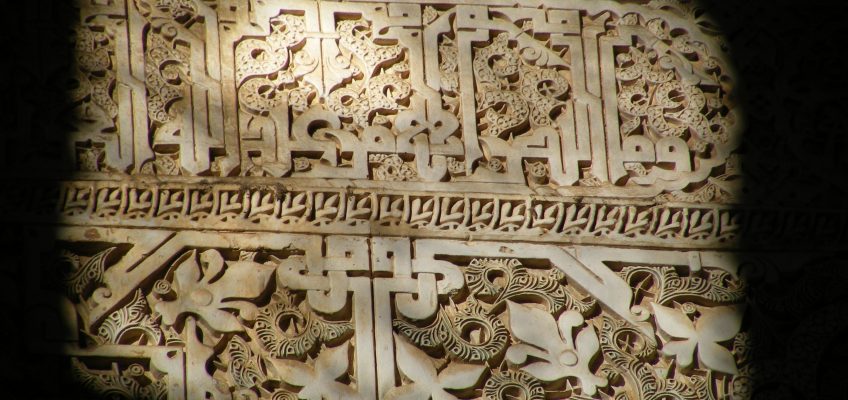
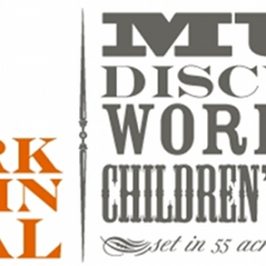
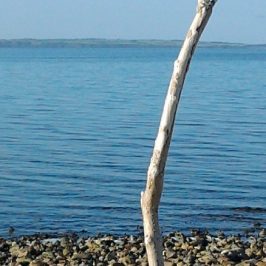
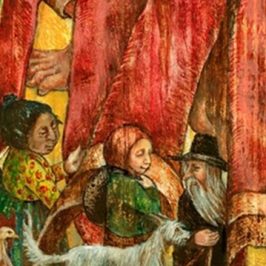
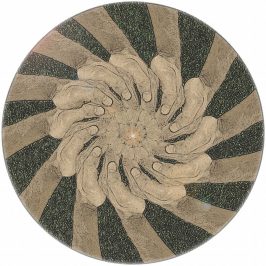
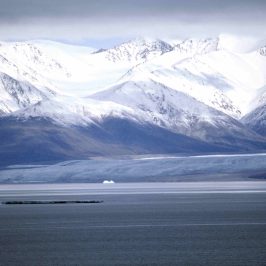
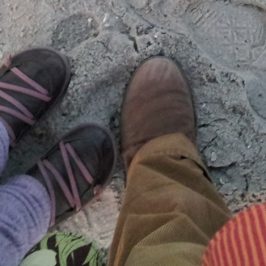
mark sutherland
This is a deep & insightful piece that reflects a true reality. The stories we tell ourselves , individually & collectivly, is how we shape our experienced reality on a day to day basis. We are in a time period when these stories can & must change if we are to successfully negotiate the planetary crisis the human species is bringing about. Why are End of the World stories so popular in the media ? Because in many places that’s what happens after a catastrophic natural event – civilization – temporarily anyway- comes to an end . If a new relationship between the human species & this planet is not created , civilization as we know it, will end.
What is being gestated now is a new narrative for post industrial, post Christian Western civilization . It hasn’t been recognised as yet by the mainstream media – the source of much of our cultures storytelling- but at some point it will , and that’s when things will begin to change more visibly. These new stories also originate from a deeper understanding of our own true spiritual nature & manifest that understanding in a way that we humans will create a better & more enlightened relationship amongst themselves & with the natural world .
Time is short & some of the changes we will see are almost beyond our imagination at this point. What story will we tell ourselves ? Destruction or rebirth ? Or both ?
jeppe
hello mark,
thank you for sharing your thoughts and apologies for the slow reply on this one – i’ve been hiding away offline for a couple of weeks and didn’t see your comment until now.
i agree that many of the changes to come are largely unimaginable. the complexity and uncertainties involved are simply to large for us to hold all the variables in our mind at once – and the process is inevitably uncontrollable. all this is likely to make the ‘end’ of civilisation seem confusing and disorienting. this is where stories become crucial, and your question about which stories we will tell is perhaps more telling of things to come than any scenario, projection, or model we can create.
one of the points i take from sharon’s insights into storytelling is that these stories cannot be ‘made up’ any more than collapse can be controlled. they will grow organically out of the lives and realities we already live and if they are good enough and strong enough they might help us make sense within our disorientation. our very psychology is rooted in stories, and if we can find the narratives within that re-integrate us back into the community of life we might achieve the buoyancy we need to stay afloat. better than that we might even flourish.
in my personal view, such a narrative needs to re-integrate all the broken aspects of our personal and collective stories into a story that transcends the dualisms that divide us (human/nature, man/woman, mind/body, self/other, our fragmented selves) – we need to recognise them as relational rather than contrary. they constitute the whole. perhaps this touches on what you call a deeper understanding of our nature.
it is the story of contrary opposites that our civilisation has grown out of and it is so deeply ingrained that it is hard to see how the logic of civilisation could overcome the problems it has created. urgency and panic are conditions where the old logic can push forward with drastic measures to ‘solve’ the ‘problems’. but a bottom-up, grassroots story of a different reality where humans and nature are no longer separate concepts will take longer to flourish than any policy ‘window of opportunity’ allows. that is why i doubt the mainstream news will ever report on this. the oppression and repression that underpins the story of civilisation is too embarrassing to report on!
perhaps the best we can hope for is that enough of us keep telling these stories that they some day will be taken for granted as ‘real’. meanwhile there are lots of stories from the past that can help us live through collapse, until very recently we could ‘make do’ with very little. my grandmothers’ stories, for example, of preserving summer foods for the winter is one that is extremely useful and undoubtedly is catching on. in the end necessity will show us which stories are worth telling.
jeppe